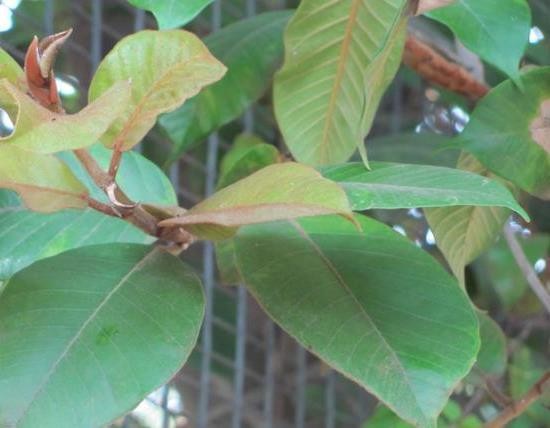Chinese banyan
(Ficus cestrifolia)

Description
Ficus microcarpa, also known as Chinese banyan, Malayan banyan, Indian laurel, curtain fig, or gajumaru is a tree in the fig family Moraceae. It is native in a range from China through tropical Asia and the Caroline Islands to Australia. It is widely planted as a shade tree and frequently misidentified as F. retusa or as F. nitida (syn. F. benjamina). Ficus microcarpa is a tropical tree with smooth light-gray bark and entire oblanceolate leaves about 2-2.5 inches (5–6 cm) long which in Mediterranean climates grows to about forty feet (twelve meters) tall and with an equal spread of crown. Where conditions are favorable for the banyan habit (tropical and humid subtropical) it grows much larger, producing great numbers of prop roots. The largest known specimen is Auntie Sarah's Banyan at the Menehune Botanical Gardens near Nawiliwili, Kauai, Hawai'i which is 110.0 feet (33.53 meters) in height, 250 feet (76.2 meters) in crown spread, and having over one thousand aerial trunks. The F. microcarpa with the thickest trunk is also in Hawai'i, at Keaau Village, Puna District, on the Big Island. Its main trunk is 28.0 feet (8.53 meters) thick at breast height. It is also 195.0 feet (59.44 meters) in limb spread. Only slightly smaller is the "Banyan at Lomteuheakal" in Vanuatu, a F. microcarpa with a main trunk 27.15 feet thick (26 meters circumference). Ficus microcarpa is native to tropical Asia, southern China, Taiwan, islands of the Western Pacific and Australia. A tropical and subtropical species, the tree requires a warm climate and a humid atmosphere. It can nevertheless withstand temperatures close to 0 °C. The species occurs mainly at low elevations, and its natural habitats include tropical rainforests, river edges, coasts, swamps and mangroves. Introduced Range Ficus microcarpa was widely distributed as an ornamental plant and is one of the most common street trees in warm climates. Outside its original range, the species has been introduced to North Africa, Iraq, Pakistan, Japan and Hawaii. In America, it was introduced in Florida and Central America and the South, where it is commonly grown as an ornamental species. In urbanized areas, trees can grow in cracks, walls, buildings and other masonry elements. It seems that the species can tolerate urban pollutants in soil moisture, including sulfur dioxide, lead and cadmium, as well as salt.
Taxonomic tree:







